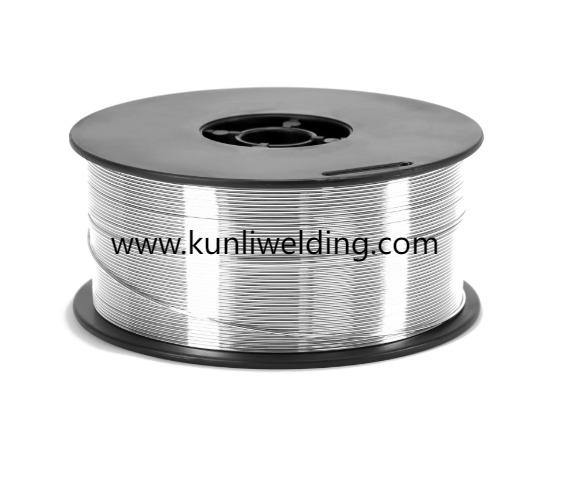Industrial Floor Scrubber Market Share Leading Players and Competitive Landscape
The industrial floor scrubber market share is becoming increasingly competitive, with several key players striving to capture a larger portion of the market. Major manufacturers are focusing on product innovation, strategic partnerships, and geographic expansion to enhance their market presence. The growing demand for heavy-duty floor care solutions and commercial cleaning equipment is influencing market share dynamics. Companies are also investing in research and development to create advanced industrial scrubbers that meet the diverse needs of various industries, thereby driving competition and growth in the market.
The global Industrial Floor Scrubber Market is witnessing significant growth due to increasing demand for efficient and hygienic cleaning solutions across industrial and commercial environments. With expanding industrialization, the need for maintaining cleanliness and safety within manufacturing plants, warehouses, and commercial spaces has become a top priority. Industrial floor scrubbers are designed to automate cleaning operations by scrubbing, washing, and drying hard floors in a single pass, reducing manual labor and time. These machines are being rapidly adopted in industries such as food and beverage, healthcare, retail, automotive, and logistics, as they help ensure a clean and safe working environment that complies with hygiene regulations and workplace safety standards.
Market Dynamics
The major driver propelling the industrial floor scrubber market is the rising awareness of hygiene and workplace safety. Companies across sectors are increasingly focusing on maintaining a clean environment to boost employee health, reduce downtime, and comply with health regulations. The integration of automation and smart technologies has revolutionized the cleaning industry. The emergence of autonomous or robotic floor scrubbers equipped with sensors, artificial intelligence (AI), and machine learning (ML) capabilities has transformed industrial cleaning practices. These robots can map the cleaning area, avoid obstacles, and perform cleaning tasks efficiently without human intervention. Additionally, the ongoing trend of green cleaning and sustainability is encouraging the development of eco-friendly scrubbers that minimize water and chemical usage while maximizing cleaning efficiency.
Market Segmentation
The market for industrial floor scrubbers is segmented based on product type, power source, end-user industry, and region. In terms of product type, the key segments include walk-behind scrubbers, ride-on scrubbers, and robotic scrubbers. Walk-behind scrubbers are commonly used in small and medium-sized spaces where flexibility and maneuverability are essential, while ride-on models are suitable for large-scale facilities such as airports, warehouses, and manufacturing units. Robotic scrubbers are witnessing exponential growth due to their advanced automation features and ability to operate without constant supervision. Based on power source, the market is categorized into battery-powered, electric, and fuel-powered scrubbers. Battery-powered variants dominate due to their energy efficiency, mobility, and lower environmental impact compared to traditional fuel-based models.
Regional Insights
Geographically, North America holds a substantial share of the industrial floor scrubber market, driven by the presence of advanced manufacturing and commercial facilities that prioritize cleanliness and automation. Europe follows closely, with high adoption rates of eco-friendly and robotic scrubbers, influenced by stringent environmental regulations and labor costs. The Asia-Pacific region, however, is expected to experience the fastest growth during the forecast period due to rapid industrialization, urbanization, and increasing investment in infrastructure projects. Countries like China, India, and Japan are focusing on improving workplace hygiene, which is stimulating market growth. Moreover, government initiatives promoting industrial automation and smart manufacturing are contributing significantly to market expansion.
Technological Advancements and Innovations
The industrial floor scrubber industry is undergoing a transformation with the integration of innovative technologies. Modern scrubbers are equipped with advanced features such as IoT connectivity, smart sensors, and telematics that allow operators to monitor machine performance, track usage, and schedule maintenance remotely. Some leading manufacturers are introducing hybrid models that can switch between manual and autonomous modes, offering flexibility depending on operational needs. Furthermore, lithium-ion battery technology has emerged as a game-changer, offering longer run times, faster charging, and reduced maintenance compared to traditional batteries. Water recycling systems and chemical-free cleaning solutions are also gaining popularity, aligning with sustainability goals and reducing the total cost of ownership.
Competitive Landscape
The industrial floor scrubber market is competitive, with several established players focusing on innovation, partnerships, and product expansion to strengthen their market position. Key companies are investing in research and development (R&D) to design efficient, durable, and sustainable cleaning equipment. Strategic collaborations with technology providers are helping companies enhance product capabilities through automation and AI integration. Additionally, expanding distribution networks and offering customized cleaning solutions for different industries are strategies used by market players to attract new customers. Pricing competition remains intense, as cost-effectiveness and reliability are crucial for long-term customer retention.
Market Challenges
Despite the promising outlook, the market faces challenges such as high initial investment and maintenance costs associated with advanced models. Small and medium-sized enterprises (SMEs) often hesitate to adopt expensive robotic scrubbers due to budget constraints. Moreover, the lack of skilled personnel to operate and maintain these machines can limit their deployment in developing regions. Battery disposal and recycling concerns also pose environmental challenges. Manufacturers are addressing these issues by introducing affordable, energy-efficient models and providing training and after-sales support to customers.
Future Outlook
The future of the industrial floor scrubber market looks highly promising, with continuous technological evolution and increasing emphasis on sustainability. The growing demand for autonomous cleaning systems, driven by labor shortages and the need for efficiency, will shape the market landscape in the coming years. Integration with smart facility management systems will further enhance cleaning efficiency and resource utilization. Manufacturers focusing on innovation, energy efficiency, and user-friendly design are likely to gain a competitive advantage. As industries continue to prioritize hygiene and operational efficiency, industrial floor scrubbers will remain indispensable tools for modern cleaning practices.
FAQs
Q1. What are the main types of industrial floor scrubbers available in the market?
The primary types include walk-behind scrubbers, ride-on scrubbers, and autonomous robotic scrubbers, each designed for different cleaning capacities and operational environments.
Q2. Which industries use industrial floor scrubbers the most?
Industries such as manufacturing, logistics, healthcare, food and beverage, retail, and transportation are major users of floor scrubbers due to their hygiene and safety requirements.
Q3. What technological trends are shaping the industrial floor scrubber market?
Key trends include the adoption of autonomous cleaning robots, IoT-based monitoring systems, lithium-ion battery technology, and eco-friendly cleaning solutions.
More Related Reports:






